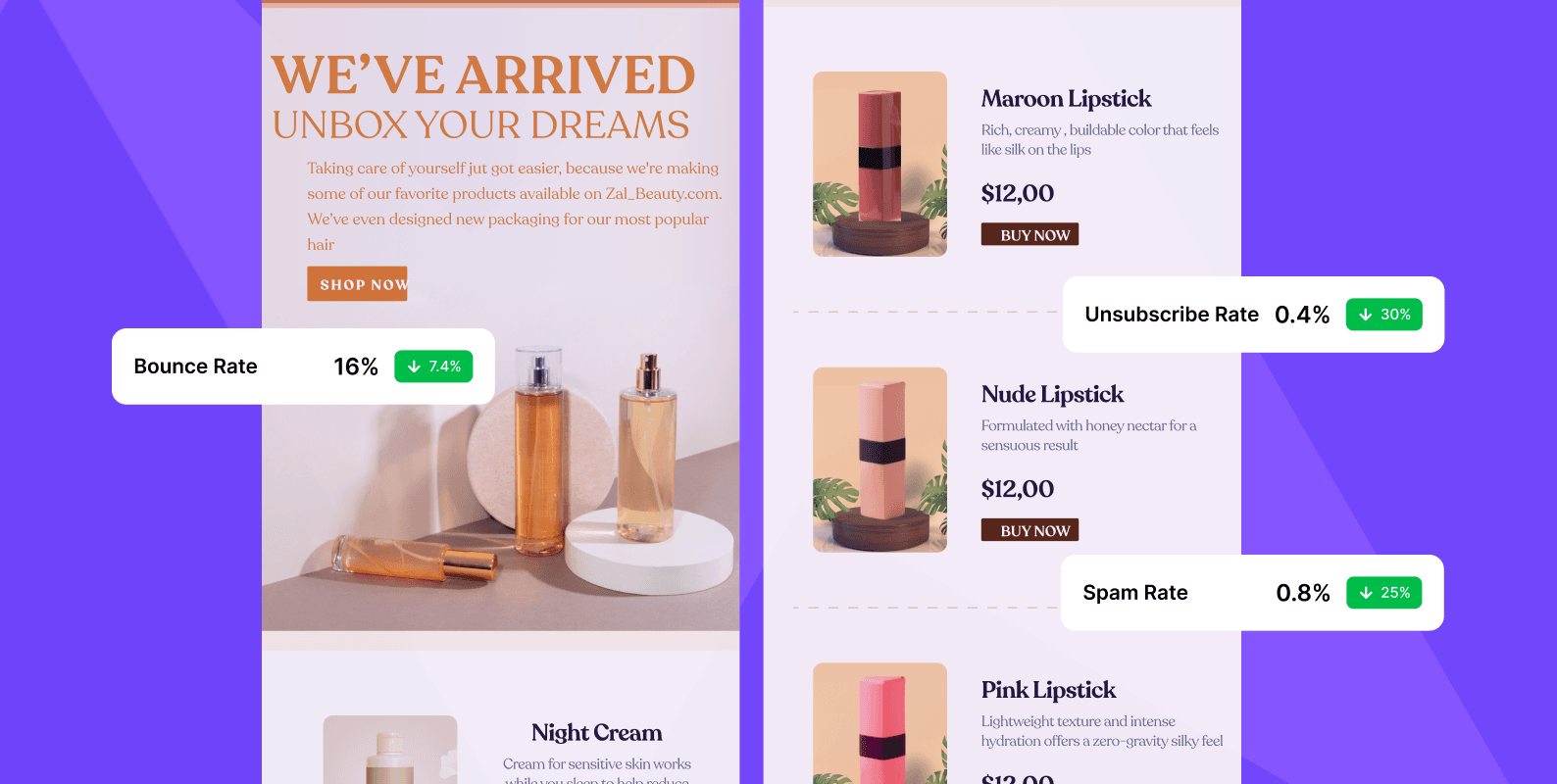Welcome to the dynamic world of ecommerce, where numbers speak louder than words, and data is the compass guiding successful ventures. In the midst of this bustling marketplace, email marketing emerges as a tried and tested strategy, continuing to play a significant role in brand-customer communication, engagement, and ultimately, sales conversions.
In this blog post, we’ll dive deep into the most critical email marketing statistics that every ecommerce business should be aware of. We will break down the data, segment by segment, to help you understand how to effectively tailor your email marketing strategy, maximize engagement, and boost your ROI. Are you ready to unlock the power of data-driven email marketing? Let’s dive in!
Number of emails sent and opened
1) Ecommerce brands send an average of 16.68 emails per month
2) The average open rate for ecommerce emails is 18.20%. (Source: Omnisend)
3) The average open rate of eCommerce marketing emails is 15.68%. (Source: MailChimp)
4) Number of sent and received e-mails per day worldwide from 2017 to 2025 (in billions)
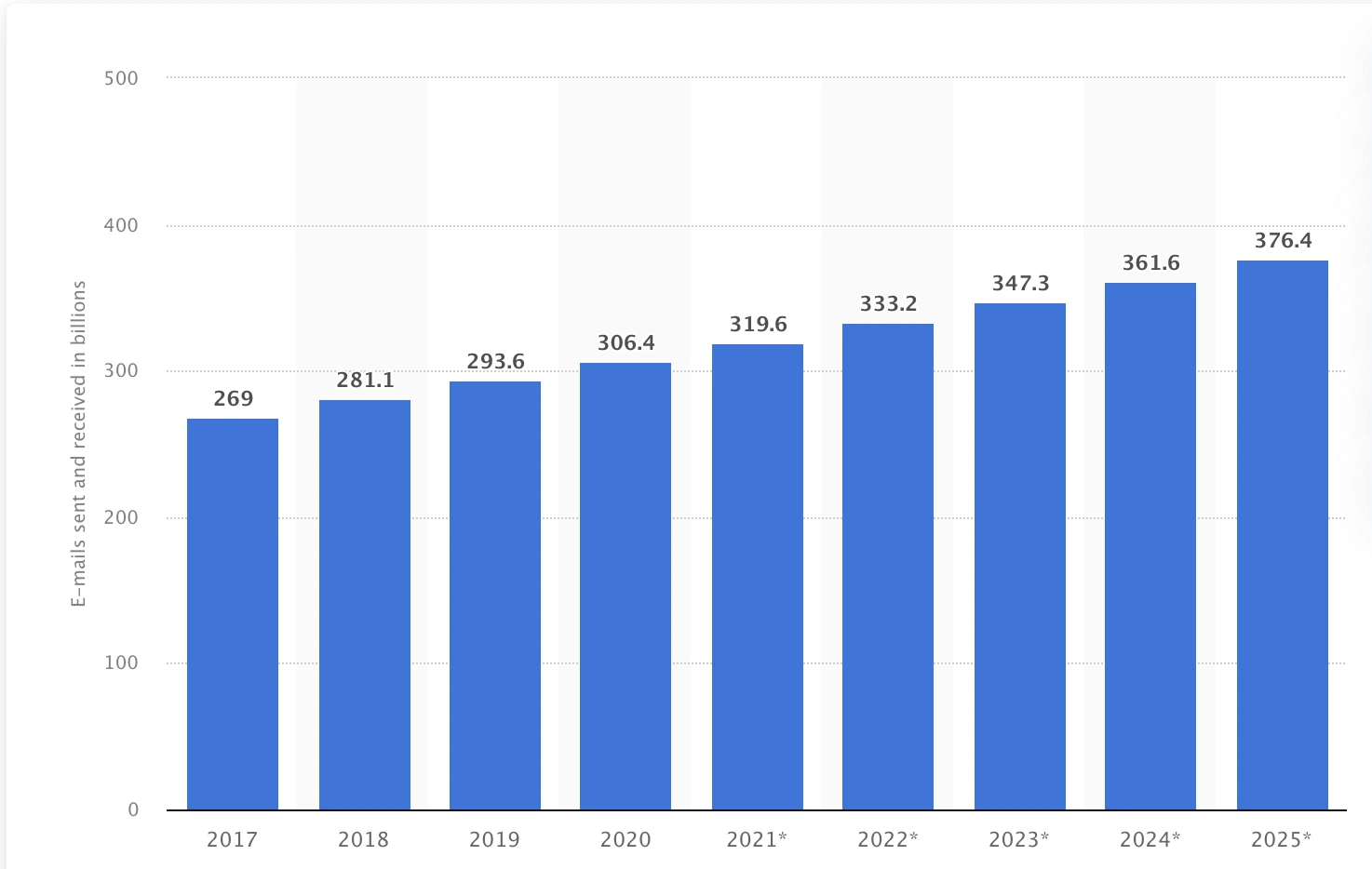
With the internet becoming increasingly accessible, the number of e-mails sent and received globally has increased yearly since 2017. In 2021, an estimated 319.6 billion e-mails were sent and received daily around the world. This figure is projected to increase to 376.4 billion daily e-mails by 2025.
5) Changes in open e-mail rates observed by marketers worldwide in 2022.

In 2022, around 67 percent of marketers from around the world stated that their e-mail marketing campaigns had an increased open rate compared to what they observed in 2021.(Statista)
6) Around 60 percent of marketers from around the world stated that their e-mail marketing campaigns had an open rate of more than 20 percent. Another 4.2 percent shared that their open rates were under 10 percent.
Source (Statista)
7) Ecommerce emails have one of the highest deliverability rates of 96%. (Netcore Cloud)
Conversion rates
8) Ecommerce email campaigns have an average conversion rate of around 2.5%
9) Email marketing has an ROI of 4400%. (Source: Campaign Monitor)
10) Cart abandonment emails have an average conversion rate of 18.64%. (Source: Moosend)
11) The average click-through rate (CTR) for ecommerce emails is around 2-3%. (Source: Mailchimp)
12) Mailmodo explains how the ecommerce email marketing conversion rate ranks under 2% of the total industry.

13) According to Custora E-Commerce Pulse, email accounted for 19.8% of all transactions – trailing only paid search (19.9%) and organic traffic (21.8%). (source – Custora E-Commerce Pulse)
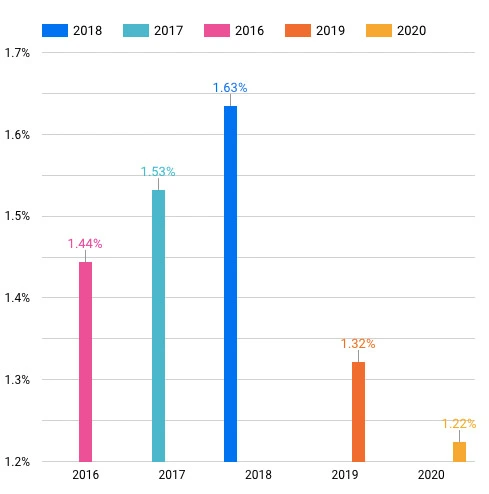
14) Cart abandonment emails boost sales by 4.43% across all eCommerce sectors. (Sale Cycle)
15) The landing page conversion rate from email marketing for ecommerce businesses is 2.31%. (GetResponse)
16) Cart abandonment emails sent one hour after a customer leaves are the most effective, converting 6.33 percent of visitors. (Convince and Convert)
17) More than half of ecommerce customers say that emails affect their purchasing decision (Sale Cycle)
Email List Growth
18) The average opt-in rate for email signups is around 1.95%. (Source: Justuno)
19) The average unsubscribe rate is around 0.17%, according to data from Mailchimp. (Source: Mailchimp)
20) Email marketing campaigns account for 9% of the total traffic on eCommerce websites. (Source: Statista)
21) 89% of marketers use email as the primary channel for generating leads.
22) 29% of marketers rate email marketing as the most effective marketing channel (25% for social media, 22% for SEO, and 25% for content marketing).
23) Only 50% of the top 100 eCommerce businesses send cart abandonment emails. (Iterable)
Personalization of Emails
24) Personalized emails have a 29% higher open rate and 41% higher click-through rate than non-personalized emails. (Source: Experian)
25) 75% of consumers say they like to receive emails on discounts and offers. (source: DMA)
26) Mobile personalized email is the 2nd most popular strategy email marketers use to boost their performance. (Hubspot)
27) Emails with personalized subject lines increase open rates by 26%. (Campaign Monitor)
28) 60 % of the respondents claimed to have made a purchasing decision due to receiving a promo email. (OptinMonster)
29) 10% of customers are annoyed by too little or no personalization of email (source: Slideshare)
30) 76 % of buyers expected more personalized email to develop an intimate relationship with your brand. (source: litmus)
31) 88% of users agree they are more likely to respond to an email favorably if it looks like it’s been specifically created for them. (source: dynamicyield)
32) The top 3 reasons for using personalization in email marketing are improved open rate (82%), higher CTR (75%), and better customer satisfaction (58%). (source: SaleCycle)
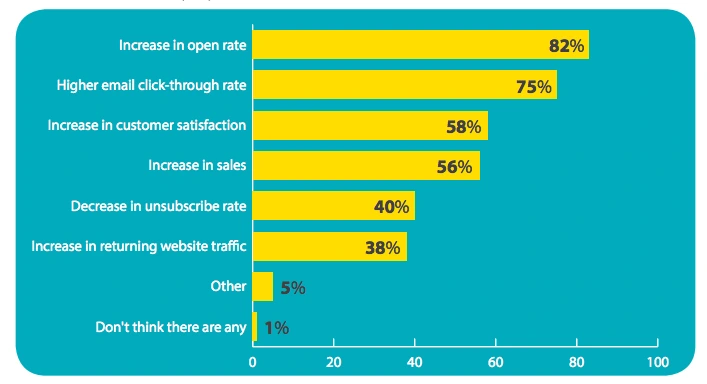
Segmentation
33) Segmented email campaigns have a 27.6% higher open rate and a 11.4% higher click rate than non-segmented campaigns.(Source: Omnisend)
34) Marketers see a 760% increase in returns from email when moving to segmented campaigns. (Campaign Monitor)
35) Segmented email campaigns show 50% higher CTR than untargeted campaigns. (Source:helpscout)
36) Segmented email campaigns drive 30 percent more opens and 50 percent more click-throughs than untargeted ones. (Source: constantcontact)
37) Only 57% of the top 100 eCommerce companies send segmented email marketing blasts to newly registered users. (Source: Iterable)
38) 63% of businesses reduce the frequency of emails sent to subscribers based on their levels of engagement. (Databox, 2022)
39) 56% of marketers use automation for segmentation purposes. (source: financesonline)
Automated Emails
40) The number of automated emails sent varies widely, but successful ecommerce brands send an average of 19.6 automated emails per month. (Source: Klaviyo)
41) Common types of automated emails include welcome emails, abandoned cart emails, and post-purchase follow-up emails. (Source: Omnisend)
42) On average, 81% of companies use marketing automation. (source: salesforce)
43) Marketing automation software users can benefit from a 451% increase in qualified leads. (source : financesonline)
44) 45% of ecommerce brands use email automation for A/B testing. (source: snov)
Email Deliverability
45) The average email bounce rate for ecommerce emails is 0.69%.
46) The average spam complaint rate for ecommerce emails is around 0.02%.(Source: Mailchimp)
47) The email unsubscribe churn for eCommerce businesses is 338 per 100,000 users. (Netcore Cloud)
48) The worst open and click-through rates are on weekends. (Source: optinmonster)
49) 45% of cart abandonment emails are opened. (Moosend)
50) The average unsubscribe rate for 2022 was 0.1%. (Source: campaignmonitor)
51) Email statistics across continents (Source: Smart Insights)
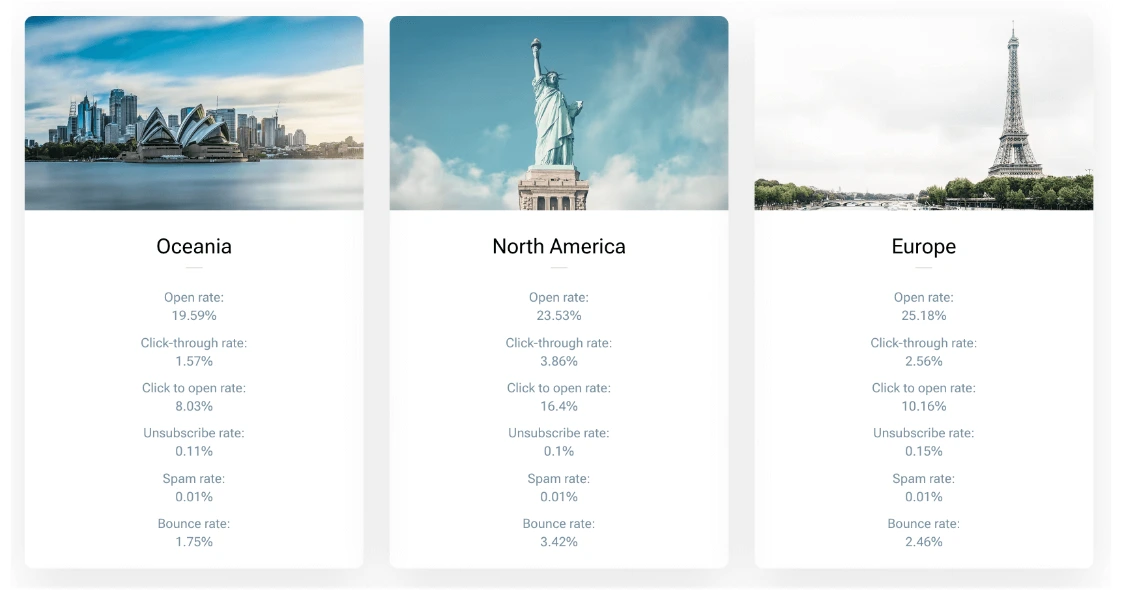
Conclusion
With its remarkable reach and ROI potential, email marketing remains a powerful tool in your digital arsenal. As we’ve explored, the numbers tell a compelling story. They provide a roadmap to customer engagement, brand loyalty, and conversion opportunities. So, as you build your email marketing strategy, remember to harness these statistics to optimize your campaigns. With data-driven decisions and a customer-centric approach, the world of ecommerce is yours to conquer. Here’s to harnessing the power of email marketing for your success!
You may also like
Essential resources for your success
